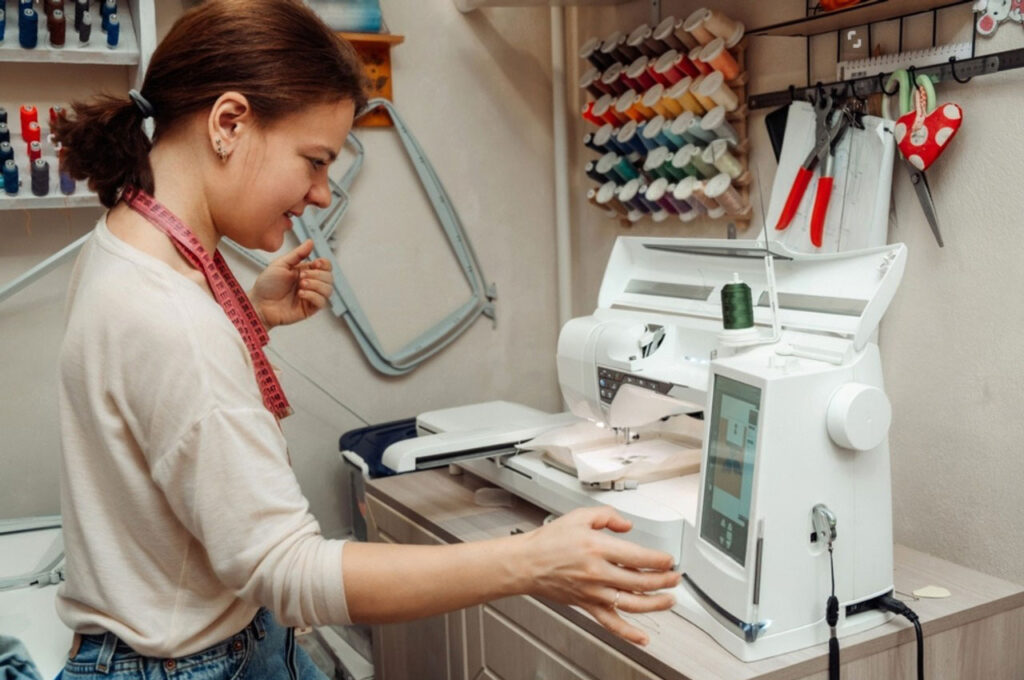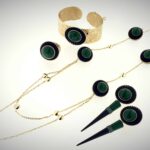You have the perfect design ready to go. You load it into your software, click the “Auto-Digitize” button, and like magic, you get an embroidery file. It looks decent on screen, so you send it to your machine. But as it stitches out, things go wrong. The fabric puckers, the details are a tangled mess, and the final result looks amateurish. This frustrating scenario plays out in homes and shops every day, and the culprit isn’t the machine or the thread—it’s the file. This is where the irreplaceable skill of professional digitizers for embroidery becomes your greatest asset. They are the secret weapon that transforms a good idea into a stunning, stitch-perfect reality, operating far beyond the limited capabilities of an automated button.
While auto-digitizing promises a quick and easy solution, it consistently fails to deliver professional quality. It’s the difference between using a language translation app for a casual phrase and hiring a professional translator for a complex legal document. Both might get the basic words right, but only one captures nuance, context, and true meaning. Human digitizers don’t just convert an image; they interpret and engineer it for the physical world of thread and fabric, making countless artistic and technical decisions that software cannot comprehend.
The Automation Illusion: Where Software Falls Short
Auto-digitizing algorithms work on a simple principle: trace the outlines and fill the spaces with stitches. This approach seems logical on the surface, but it completely ignores the practical physics of embroidery. The software has no understanding of context, intent, or real-world limitations.
Think of auto-digitizing as a robot trying to paint a masterpiece. It can replicate the colors and shapes, but it has no understanding of light, shadow, brushstroke technique, or emotional impact. Similarly, automated embroidery software creates files that are often plagued by predictable issues:
-
Puckering and Distortion: Algorithms frequently overpack stitches, creating a dense, stiff design that pulls and warps the fabric.
-
Poor Stitch Direction: Software might lay all fill stitches in a uniform direction that works against the natural flow of a shape, creating weak points and unappealing textures.
-
Clogged Details: Small text and intricate features become a tangled mess as the software tries to force too many stitches into a tiny area.
-
One-Size-Fits-None: The same auto-digitized file will fail in different ways on different materials. It doesn’t adjust for the vast difference between stitching on a stretchy polo shirt and a stiff canvas cap.
These aren’t just minor inconveniences; they lead to wasted time, ruined materials, and a final product that fails to represent your vision or your brand well.
The Human Advantage: The Art and Science of Digitizing
Professional digitizers for embroidery are more than just technicians; they are a unique blend of artist and engineer. They approach each design with a critical eye and a deep understanding of how stitches interact with fabric. This human touch manifests in several critical areas that automation cannot replicate.
Strategic Stitch Planning and Direction
A human digitizer makes conscious, artistic decisions about every aspect of the stitch plan. They don’t just fill a shape; they determine the best stitch type—satin for a smooth, shiny border, fill for covering large areas, or run for fine details—based on the desired visual and textural effect.
Most importantly, they control stitch direction. They might angle stitches to follow the curve of a leaf, radiate them from a central point to create depth, or set them perpendicular to an underlying seam to increase strength. This strategic planning doesn’t just make the design beautiful; it makes it physically robust and durable.
Fabric-Specific Engineering
This is perhaps the most significant advantage. Before they even begin, a human digitizer will ask, “What are you sewing this on?” This single piece of information guides every subsequent decision.
-
For stretch knits like t-shirts, they will dramatically reduce stitch density, use more flexible stitch types, and add specific underlay to prevent puckering.
-
For thick towels, they will increase density and use a powerful underlay to make the design stand up against the looped pile.
-
For structured caps, they will account for the curved, seamed surface and plan the stitch sequence to avoid gaps.
An auto-digitizer applies the same generic settings to every project. A human engineer tailors the entire file for flawless performance on its specific canvas.
Mastery of the Unseen: Underlay and Pull Compensation
The foundation of a great embroidery design is mostly invisible. Underlay is a layer of stitches sewn before the top design that stabilizes the fabric, prevents puckering, and provides a base for the top stitches to lie smoothly. A human digitizer doesn’t just apply a generic underlay; they strategically choose from multiple types (edge walk, center walk, zig-zag) to suit each specific section of the design.
They also master pull compensation. Thread naturally pulls on fabric as it stitches, causing shapes to contract slightly. A human digitizer proactively widens satin columns and fill areas to account for this physical phenomenon, ensuring that elements that are meant to meet don’t end up with gaps. Software applies these features with a broad brush; a human applies them with the precision of a surgeon.
Intelligent Sequencing and Problem Solving
A digitizer plans the exact order in which the machine will sew the design. They group colors logically to minimize thread changes and sequence objects from background to foreground to create clean, sharp edges. This thoughtful sequencing reduces machine runtime, minimizes thread trims, and creates a cleaner-looking backer.
When a human encounters a problem in the source art—like a gradient that can’t be embroidered or text that is too small—they don’t just process it. They problem-solve. They will contact you and suggest simplifications or modifications that preserve the design’s intent while making it embroidery-friendly.
The Real Cost-Benefit Analysis: Saving Money by Spending More
It’s easy to see the upfront price of a digitizing service and balk, thinking the free auto-convert button is the better financial choice. This is a short-sighted view. The true cost of a bad digitized file is much higher:
-
Wasted Materials: Ruined garments, wasted stabilizer, and spent thread add up quickly after just a few failed stitch-outs.
-
Wasted Time: Every failed design means time spent re-hooping, re-setting the machine, and troubleshooting.
-
Damaged Reputation: If you are creating items for clients or selling products, a poor-quality embroidery job can damage your brand and lose you business.
A file created by professional digitizers for embroidery works correctly the first time, and every time. It stitches smoothly, uses thread efficiently, and produces a result you can be proud of. The initial investment pays for itself in saved materials, preserved reputation, and peace of mind.
When a Human Digitizer is Non-Negotiable
While you might get away with auto-digitizing a very simple shape, you should always choose a professional service for:
-
Company Logos and Branding: Your logo represents your business. It needs to be perfect.
-
Complex Artwork: Designs with shadows, gradients, or multiple intricate elements.
-
Small Text: Lettering under a quarter-inch requires expert technique to remain legible.
-
Challenging Fabrics: Any project on fleece, terry cloth, nylon, or stretchy knits.
-
High-Volume Orders: Consistency is key, and a professional file ensures every item looks identical.
Conclusion: Unlock the True Potential of Your Embroidery
Embroidery digitizing is not a mechanical process; it is a craft. It requires an understanding of how two-dimensional art translates into a three-dimensional textile object. Professional digitizers for embroidery provide more than a file—they provide a solution. They offer the assurance that your vision will be interpreted by an expert who can navigate the technical challenges of the medium while enhancing its artistic potential.
By choosing a human over an algorithm, you are investing in quality, durability, and professionalism. You are ensuring that your design isn’t just converted, but it’s truly brought to life with the clarity, texture, and integrity it deserves. Move beyond the auto-button and unlock your secret weapon. The result won’t just be a design that stitches—it will be a design that stuns.


